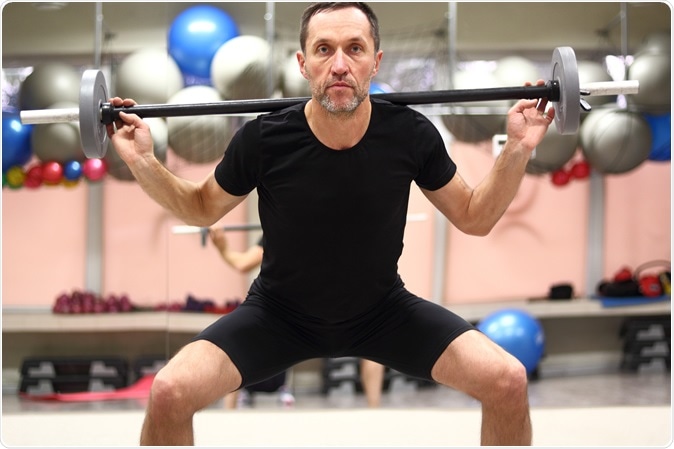Persons in their late middle age are not too late to work on their exercise routines to improve their heart health, finds a new study. Two years of aerobic exercises, at least four to five days a week can reverse the damage caused by years of sedentary non-active life before and also reduce the risk of heart failure. The study was published in the latest issue of the journal Circulation.

Image Credit: Ninikas / Shutterstock
The team of researchers looked at the heart and its functioning among 53 participants who were aged between 45 and 64 years. They were all healthy but had no regular history of exercise in their daily routines. In fact they had been leading a mostly sedentary life with lots of sitting around. This is a definitive cause that raises risk of heart disease as has been seen in previous studies. They were then divided into two groups.
One group was asked to follow a routine consisting of aerobic exercise that was escalated in intensity over two years. The other group was following a routine with yoga, weight and balance training. They were also training for three times a week for two years.
The aerobics routine involved a 30-minute session excluding warm up and cool down periods. They had to perform four sets of exercises for four minutes each. Each of these was followed with three minutes of active recovery. The exercise sets were at 95% of their maximum heart rates and the recovery phases at 60-75% of the peak heart rates. In addition they performed a two or three days a week of moderate intensity exercise wherein they could have a conversation while they exercised. Strength training was scheduled once a week and once a week they had a long session of aerobic exercise for an hour involving running, cycling, brisk walking, and tennis or dancing. The first three months they had only three half an hour moderate exercise sessions a week and the routines were escalated to these final levels over two years.
At the end of the study period, both groups were found to be doing well. The aerobic exercise group showed 18% improvement in their maximum oxygen intake during exercise. They also showed a 25% improvement in the “plasticity” of the walls of the left ventricle of the heart. The more “plastic” the heart wall is, the healthier it is say scientists. As a person ages and develops heart failure, the heart wall tends to harden and loses its “plasticity”. The Yoga, balance and weight training group however did not show these benefits.
According to Dr Benjamin Levine, lead author of the study, this could be called “the right dose of exercise, at the right time in life,” that could hold the key to healthier heart. He is also the founder and director of the Institute for Exercise and Environmental Medicine, a joint programme between Texas Health Resources and UT Southwestern Medical Center Dallas, Texas. He added, “We found what we believe to be the optimal dose of the right kind of exercise, which is four to five times a week, and the 'sweet spot' in time, when the heart risk from a lifetime of sedentary behaviour can be improved - which is late-middle age…The result was a reversal of decades of a sedentary lifestyle on the heart for most of the study participants.” He added that exercise needs to become part of the daily routine much like brushing one’s teeth or changing clothes. This whole study showed that it is possible to reverse the effects of a sedentary life and also reduce the risk of heart disease.
Source:
http://circ.ahajournals.org/content/early/2018/01/03/CIRCULATIONAHA.117.030617